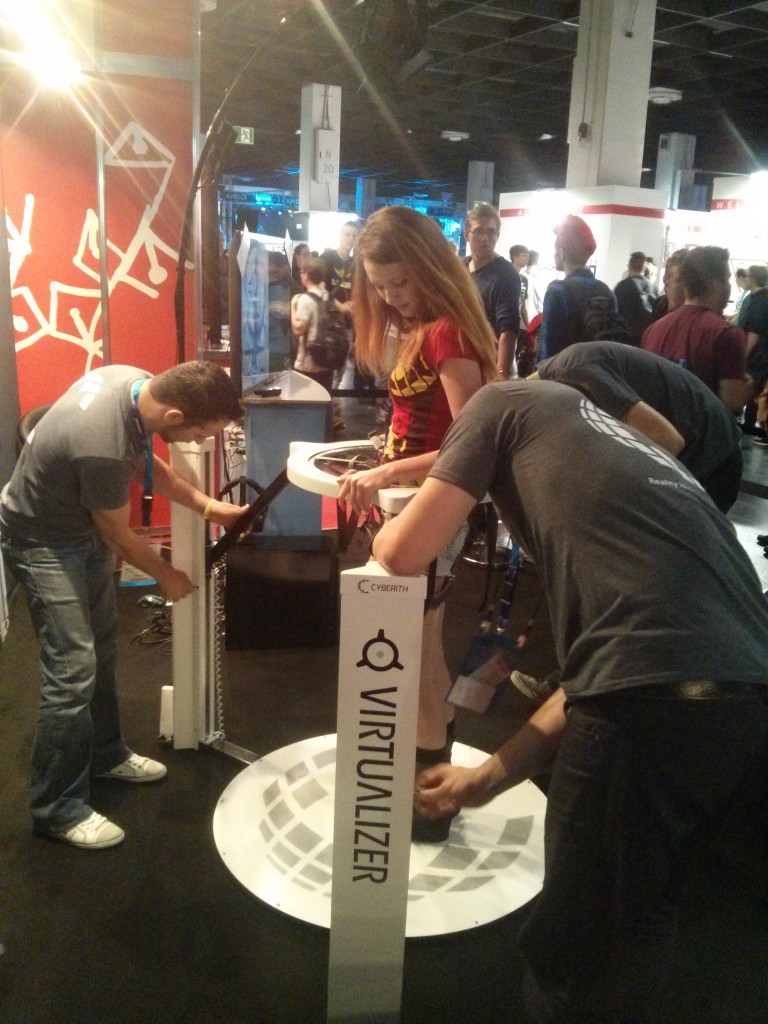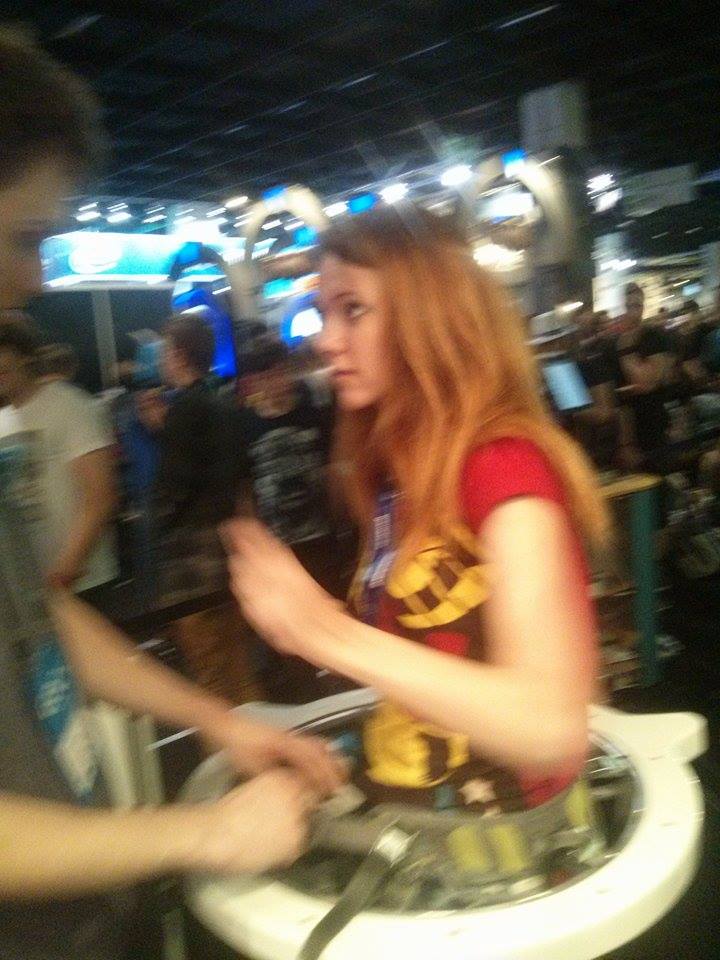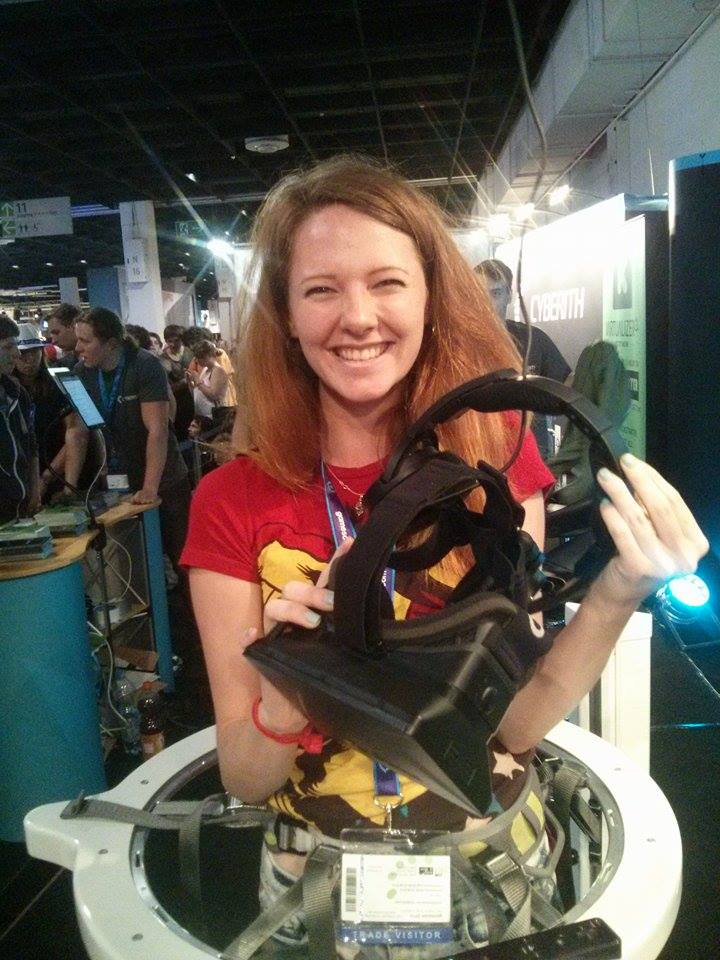I was raised on a diet of science fiction and fantasy novels. I also spent six years being homeschooled by a computer program. My natural inclination towards escapism and having the privilege of being a part of the first generation to hardly remember a life without internet has made me a perfect fan-girl for all kinds of VR (virtual reality). I see nothing wrong in escaping our lives to enrich them. Novels, films, video games, our avatar-forms within the internet itself – all lead to a richer, more exciting, deeper understanding of the real world. VR gives us bubbles in which we can experiment and make mistakes – and, of course, escape our own troubles for a little while.
This isn’t to say that VR can act as a replacement for real-world experiences, but it can give us the chance to experience things we could never could without it, and the more realistic the VR, the more enriching the experience.
One of my favorite short films is Address is Approximate, which is about a toy who uses Google maps to travel the world from within an office. This is a perfect example of the value of VR; it would be better for him to actually go to these places, but he can’t, and VR is infinitely better than nothing at all.
One of my favorite book serious also delves into the question of VR – both the dangers, the allure, and the age-old question: When does a simulation become so real it transcends simulation and becomes reality? What makes something real and something else not real, if you can’t tell the difference?
If you’re interested in this sort of thing (and it is ridiculously interesting, come on) I recommend the Otherland series by Tad Williams, the anime series Ghost in the Shell (and a bazillion other series and movies – Matrix, anyone?), and the oh-so-scientific creation theory of NASA’s Richard Terrile that is gaining ground right now – that we are all in an extremely realistic simulation that has programmed us as sentient beings who believe they have free will, and ‘God’ is also known as ‘the programmer.’
Now what if our desires are a little more unrealistic than visiting California – what if we want to ride a flaming dragon into the sunset or shoot rocket launchers at alien invaders?
This is where Cyberith comes in!
Cyberith describes their Virtualizer as:
“… an award-winning locomotion device for Virtual Reality that allows the user to move freely in virtual environments. Step inside the game and become one with your character.”
I describe it as: ONE OF THE COOLEST THINGS EVER CREATED.
Combined with Oculus Rift, the Virtualizer is everything they say it is and more. I was lucky enough to test it out at Gamescom last week, and it was incredibly impressive. In the middle of the largest gaming convention in the world, surrounded by thousands and thousands of people and a million flashing, beeping, booming things, I put on the headset, took a ‘step’, and was completely gone. The level of immersion is stunning. It took no effort to believe I was there. If anything, the illusion was almost too believable – I found myself wondering, a little panicked, How do I get out?
I also picked the creepiest demo option, thinking I would need the extra push of fear to make it realistic. Unnecessary. Instead I ended up frantically running through dark, twisting tunnels from a ghost, heart pounding furiously, desperately telling myself, it’s not real, it’s not real.

He’s explaining to me that I cannot actually use the controller like a Wii to punch the ghost. I just have to run
Despite my momentary panic, I couldn’t have been more happy. It was everything I’ve ever dreamed of and more. This is the future, not just of gaming, but of all VR advancements to come. Every step like this takes us a little farther into our own realities, and I say, “Let’s go!”
Their tagline is also “reality is not enough.” So awesome.
The Cyberith Virtualizer can be used with nearly any video game. You can connect different hand-held controllers – like one in the shape of a gun, for example – instead of using a keyboard/mouse or a console controller. The Virtualizer allows you to actually run, jump (if you feel like it), sit, crouch, spin around – all within the same circular frame.
I had a chance to ask Holger Hager, one of the founders of Cyberith, a few questions about the Virtualizer and how they got started.
Which games can users play with the Virtualizer?
Holger: Every game! The Virtualizer can emulate a keyboard or a controller’s input. We’re hoping to work with software developers to develop Virtualizer functions natively in the game. This means more possibilities and more movement. The Virtualizer works really well with Oculus, but it also works really well with other displays.
(Side note: This possibilities for this are so exciting. If game developers have specific movements, maybe even specific controllers, built for/into the game… I am just too excited.)
How did you get involved with Cyberith?
Holger: Tuncay Cakmak and I were friends at the University and he was always telling me about it, so we started working on it. The first prototype was awesome! We decided to go for it, make a company.
We built the first prototype in a workshop Tuncay’s dad owned for cars. We started out with a sensor system, and we just kept working on it all the time. Started going to fairs and getting a lot of feedback. We’re constantly coming up with new things and improving it all the time.
What are your goals for Cyberith?
Holger: First, we’re here for the enthusiasts. Our Kickstarters. The next step is game-specific retail chains, game developers, and serious home gamers. We’re always where the virtual reality is. Our development products ship out in March, and we’re entering the regular market in 2015.
The Cyberith Virtualizer is currently running a campaign on Kickstarter, but it’s over Auguest 30th, so if you want one, pre-order is now before it’s too late! I know I want to.
https://www.kickstarter.com/projects/1259519125/cyberith-virtualizer-immersive-virtual-reality-gam
It is unreal – or is it? (heehee)






I tried the earlier prototype of Cyberith last year. Almost had a heart attack when my character fell off the roof in the game. Too realistic i guess =J